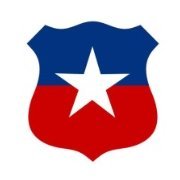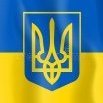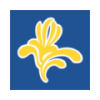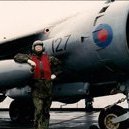Search the Community
Showing results for tags 'Kingfisher'.
-
Another one built in the past, this time from last autumn. Very challanging kit. Typical soapy short run product from AZ range. Of course I couldn't leave it without any intrusion. As you can see, flaps are dropped, some tiny details are added all around the airframe and both crew stations were "boosted" as well (there even is a life raft inside, just behind the bulkhead). Because of that, I have decided to open the canopy, so I had to make new sliding parts with vacuum cleaner. They didn't go 100% as I wanted, especially pilot's part. Besides that, it's nothing special tbh. This airplane would be a great topic for any legit serious manufacturer, because the real airframe had many tiny bits both inside and outside making it very attractive and unique
-
While I'm waiting for paint to dry, I thought I'd start on a couple of old Monogram Kingfishers. I've separated the cowls, removed the molded in engine faces, and replaced them with resin engines and props, and made new exhaust stacks from hollowed out aluminum tubing. I've also split the wings (with a spar box to retain the correct dihedral) and cut back the lower wing to allow a cockpit to be created. I also have a very nice resin corrected float that shows just how anemic the kit one really was. This is an oldie, for sure, but should be fun!
-
This is sort of a book mark for now….not 100% committed to building this or joining this GB at the moment. Have quite a few builds to clear off the bench first….as can be seen…. ….but I need to get at least a couple off the bench before I starts this build. Normally the model comes first, but this time the decals were the first thing I bought about 2-3 years ago, and not 100% sure why I did! There were plenty of the Kitty Hawk models around until the shut up shop then they became impossible to find at any reasonable price!! I was already to sell them when this one showed up at my local club meet in June this year…and at a nice price as well. It’s quite a big model and there’s lots to it……..and being a Kitty Hawk model it’ll be a super pain to build!!! There were some nice schemes out of the box, the one with the undercarriage did grab me… ….but she will be a RAAF bird, either the later Camo versions or possibly the Yellow Artic one, though a single solid colour scheme can be hard to get right, but it would certainly be different! Anyway as mentioned this will be a place holder for now, but with luck I should be able to start this build close to the start of the GB.
- 6 replies
-
- 14
-

-
- Kitty Hawk
- Kingfisher
-
(and 1 more)
Tagged with:
-

1/48 Vought OS2U Kingfisher (Monogram)
Cris Garcia posted a topic in Ready for Inspection - Aircraft
Hello Dear Friends! After the japanese 'Pete' I chose to build the american counterpart, the ubiquitous Vought Kingfisher. Not the prettiest kite over the Pacific during 1941-1945, but surely one of the most important unsung heroes of that war front. I got lucky and found a 1990's reissue of the old 1967 molds by Monogram. As a lot of you dear fellows know the Monogram kit suffers from a lot of shortcomings and innacuracies, mostly regarding the EDO float, the engine cowling and the rather spartan and simple cockpit. To fulfill that deficiencies I ordered the superb Flight Engineering pack with all the troublesome parts rebuild in resin. 10 points to the FE pack! The other interesting experience I had building this lovely seaplane, was the search for the correct colours of the 3-tone (actually 4-tone) cammo of the US Navy since the early 1943... I put my confidence in the accuracy of the AK Real Colors Intermediate Blue and Sea Blue to reach the goal, but the result was rather dissapointing when I compare their tonalities with some color photos of the time. I decided to intervined the 2 colours, adding some more blue and a little bit of red... and the results -at least for me- were much better. So... enough words! Here are the photos of this rugged and sturdy sea bird, ready to get catapulted from some American battleship or cruiser. Cris.- 17 replies
-
- 62
-

-

-
- kingfisher
- Seaplane
-
(and 1 more)
Tagged with:
-
AZ model is to release (in 2016 2019) a 1/72nd Vought OS2U Kingfisher kit (Pavla plastic). Source: http://www.britmodeller.com/forums/index.php?/topic/234931186-azmodellegatoadmiral-wwii-aircraft-comments-questions-and-wishes/?p=2147039 V.P.
- 32 replies
-
Rumour: AZmodel (?) is to (re-)release the Pavla's (?) 1/72nd Vought OS2U Kingfisher kit - ref. Or a new tool kit by Valom? It might, but I doubt it. To be followed Box art Source: https://www.facebook.com/208070375871052/photos/a.208144655863624/2184367891574614/ V.P.
-
- OS2U
- Kingfisher
-
(and 1 more)
Tagged with:
-
Vought OS2U Kingfisher Warpaint Series No.111 When the US Navy arrived at Scapa Flow in 1917 they were surprised that Royal Navy ships of all sizes carried down to Cruisers carried a aircraft for spotting duties. This was soon remedied, however most were biplanes which had to then be replaced by newer monoplane aircraft. The 1930s saw a flurry of designs put forward for a replacement. The Kingfisher was one such design from Vought. The aircraft would feature innovations such as spot welding which was designed in conjunction with the USN to create less drag; in addition the aircraft would feature spoilers and drooping ailerons which increased the wing camber to create additional lift. The aircraft was armed with a forward firing .30 calibre machine gun, while for defence the rear gunner had a pair of .30 calibre guns on a scarff mount. The aircraft could also carry two 100lb bombs or 325lb depth charges. The first aircraft were delivered in 1940 and some were at Pearl Harbour when it was attacked. The aircraft served in its float plane guise which most of us know but also served with a wheeled undercarriage as well. Aircraft served in all areas of the war conducting training, scouting, Search & Rescue, escort duties and shore bombardment. As well as with the USN the aircraft would serve with the Royal Navy, Royal Australian Air Force, Russian Navy, Cuban Naval Aviation, Chilean Navy, and the Uruguayan Navy all under lend lease. Post war aircraft also served in Mexico, and The Dominican Republic. This volume of Warpaint is the standard A4 book with 45 pages. It features substantial pages of colour profiles featuring all the users. The book is illustrated with many photographs including period colour ones where they could be found. A small section at the rear of the book shows detailed pictures of the air frame, and there is a listing of available kits, decals and other aftermarket parts. Conclusion This series of books is now well over the hundred mark and still going strong. This is another great book and is Highly recommended. Review sample courtesy of
-
Dear all, my latest little work, she is a Kingfisher OS2-U started from an rather old monogram kit a friend of mine gave me. Unfortunately the old resin from Cutting Edge are impossible to be found (at an acceptable price) so I decided to modify the kit, trying to reproduce all missing things by myself. The camo has been painted with gunze and tamiya. Decals from Aeromaster. I hope you'll like! Kind regards mario
- 15 replies
-
- 42
-

-
- kingfisher
- OS-u
-
(and 1 more)
Tagged with:
-
RAAF Kingfisher Flying Boat Decals 1:32 Red Roo Models During WWII The RAAF received a batch of 18 Vought OS2U Kingfishers which were originally destined for the Dutch East Indies. The RAAF took these on charge in 1942, while initially used as training aircraft for pilots destined for flying boats in 1943 they were used to equip No. 107 Squadron RAAF. Here they were used for convoy escort duties until the Sqn disbanded in October 1945. Post war one Kingfisher was used in support of the Australian National Antarctic Research Expedition in 194748 The Decals If at first you think there is something wrong with these decals but you can't put your finger on it; it is because of the "reversed" appearance of the decals and apparent pale colours. These decals are done with a direct deposition printer using an interesting technique where the colours are printed in the reverse order to normal screen print decals, with the whites last, followed by the glue. So instead of "sliding" the decal on, you "slap" it on! There is no problem with moving them around. A separate sheet of whites is provided for backing all the decals if needed. An interesting addition to the decal sheet is a small envelope with two small 3mm clear discs in it. RAAF kingfishers were delivered with the gunsight telescope which went through the front screen. These were removed in service and the hole plugged. The instruction have you fill the hole in the screen with crystal clear (or similar)and then use the discs over this. Now if that is not attention to detail I don't know what is! Decals are produced for four aircraft; A48-4 No.3 Operational Training Unit, Rathmines NSW 1942. RAAF Seaplane Scheme Extra Dark Sea Grey & Dark Slate Grey. A48-17 No. 107 Sqn, Rathmines, Rathmines NSW 1943. Extra Dark Sea Grey & Dark Slate Grey uppers over Sky Blue. A48-5 No. 107 Sqn, Sussex Inlet 1945. Aircraft stripped back to bare Metal with fabric areas in Aluminium Dope. A48-13 RAAF Antarctic Flight, HMAS Wyatt Earp* 1948 - Overall Trainer Yellow. *Yes the Australian Navy really did have a Ship named the "Wyatt Earp"! Conclusion The service of these Flying boats is only a small part of the RAAF in WWII and after but still worthy of note. With sets like these the modeller has a chance to build one of these aircraft. Recommended. Review sample courtesy of
-
- 2
-

-
- RAAF
- Kingfisher
-
(and 1 more)
Tagged with:
-
OS2U Kingfisher detail Sets Eduard 1:32 The Kittyhawk Kingfisher, reviewed HERE is a a lovely kit, without any additional aftermarket stuff, but, with Eduard, there’s always room for improvement in any model kit. As such, they have now released three individual sets to adorn the kit with extra and improved detail, along with a set of masks to help with the painting of the greenhouse canopy. As with most sets of this type some of the kit details will need to be removed before the etch can be added. Interior Set (32861) Contained on two sheets of relief etched brass, on half the size again as the other, one is unpainted whilst one comes pre-painted. The unpainted sheet contains items such as replacement equipment trays, and boxes, with the trays having vibration mounts made up of four separate discs. The front cockpit hoop is given a new front face, which comes complete with grab handles and the cockpit decking is also given the etch treatment once the kit details have been removed. The rear mounted machine gun is fitted with new expended shell catcher, cooling jacket, sights, ammunition tank and armoured plates, whilst the gun ring is provided with a new internal rail. The pre-painted sheet provides the modeller with a variety of coloured knobs and levers, new auxiliary instrument panels, trim wheels, plus replacement dials for the side panels for the front cockpit. The main instrument panel is also pre-painted complete with the instrument faces on the backplate. A little dab of aqua clear will give them the appearance of glass fronts. There is also a new document/map case radio faces, equipment fittings, and various straps. External Set (32386) The single long, yet quite narrow sheet contains what appear to be mostly parts to detail the engine, with new wiring harness, fittings for the cylinder heads and new cowling support ring. Yet there are numerous smaller parts on the sheet, some of which will need to be shaped, either by rolling a marble/ball bearing over them to make a dome, of running a ball point pen to enhance look of the strengthening ribs. The domed access panels to the main and auxiliary floats are fitted with individual wing-nuts, the main float also having a replacement rudder provided. The bomb crutches are completely replaced with etched pts and once assembled will really look the business, but care will need to be taken to get them right. The bombs themselves are fitted with replacement box tails, and additional tail fuse detail, along with front and rear arming vanes. The identification lights and landing lights are given new surrounds which have very fine screw detail etched into them. Seatbelts (32862) This small fret of brass comes pre-painted for the most part, but with unpainted clasps, buckles etc. Although the belts are broader than normal it looks like they will still be fiddly to make, yet it will give the cockpits a real boost, so if you buy only one set this should be it. Masks (JX189) Naturally a set of detail updates wouldn’t be complete without Eduard adding some masks. Made of Kibuki style tape they are easy to use and can help make painting less of a chore, especially with the canopy style that the Kingfisher has. Conclusion These sets may not be as comprehensive as some Eduard have produce, perhaps because Kittyhawk go most of the detail on the kit from the beginning. What is provided will certainly enhance the kit, but if you’re money conscious you may want to just go for one or two. Highly recommended Review sample courtesy of
-
- OS2U
- Kingfisher
-
(and 2 more)
Tagged with:
-
Kitty Hawk is to release a 1/32nd Vought OS2U Kingfisher kit - ref.KH32016 Now 1/32nd and not 1/48th as initially announced. Source: https://www.facebook.com/736521713066784/photos/a.736556396396649.1073741827.736521713066784/900453140006973/?type=1&theater V.P.
- 38 replies
-
- 1
-

-
- 1/48
- Kingfisher
-
(and 3 more)
Tagged with:
-
Vought OS2-U Kingfisher KittyHawk 1:32 The Vought OS2-U Kingfisher was an American catapult-launched observation floatplane. It was a compact mid-wing monoplane, with a large central float and small stabilizing floats. Performance was modest, because of its light engine. The OS2U could also operate on fixed, wheeled, tail dragger landing gear. The OS2U was the main shipboard observation aircraft used by the United States Navy during World War II, and 1,519 of the aircraft were built. It served on battleships and cruisers of the US Navy, with the United States Marine Corps in Marine Scouting Squadron Three (VMS-3), with the United States Coast Guard at coastal air stations, at sea with the Fleet Air Arm of the Royal Navy, and with the Soviet Navy. The Royal Australian Air Force also operated a few Kingfishers from shore bases. The Naval Aircraft Factory OS2N was the designation of the OS2U-3 aircraft built by the Naval Aircraft Factory in Philadelphia, Pennsylvania. The OS2U first flew on 1 March 1938. In the late 1930s, Vought engineer Rex B. Beisel was tasked with designing an observation monoplane aircraft for the U.S. Navy suitable for a multitude of tasks including directing battleship fire. In replacing the standard biplane observation aircraft with a more modern monoplane design, Beisel incorporated innovations becoming the first production type to be assembled with spot welding, a process Vought and the Naval Aircraft Factory jointly developed to create a smooth fuselage that resisted buckling and generated less drag. Beisel also introduced high-lift devices, spoilers and in a unique arrangement, deflector plate flaps and drooping ailerons located on the trailing edge of the wing were deployed to increase the camber of the wing and thus create additional lift. One of the more famous pilots flying the Kingfisher was one Douglas Fairbanks Jnr, when he was posted to the USS Washington. For combat missions, the pilot had a .30-caliber machine gun while the radio operator/gunner manned another .30-caliber machine gun (or a pair) on a flexible ring mount. The aircraft could also carry two 100 lb bombs or two 325 lb depth charges. Additionally, the "Kingfisher", as it was designated, served as a trainer in both its seaplane and landplane configurations. Beisel’s first prototype flew in 1938, powered by an air-cooled 450 hp Pratt & Whitney R-985-4 Wasp Junior radial engine. The Model It was with great joy hearing that Kittyhawk were going to release a big Kingfisher. Whilst not the most glamorous of aircraft, it did carry out an important job throughout WWII and was certainly one of the better looking floatplanes in the Allies arsenal. The kit comes in a colourful top opening box, with an artists impression of the aircraft sitting on its cradle atop a battleships catapult. Unfortunately the backdrop seems to show the aircraft at the time of the attack on Pearl Harbor. On opening, the modellers eye is drawn to a small brown box, which contains the clear parts. There are also five large sprues of light grey styrene two decal sheets, one very large and one small, and a small sheet of etched brass. All the parts are very well moulded, with few signs of imperfections other than some flow marks on the fuselage and on the wings. There is a small amount of flash and quite a few moulding pips throughout the sprues. Whilst the clear parts are very clear, there is a very slight distortion on the curved top panels of the canopies. Whilst there is quite a lot of detail, it doesn’t look to be overly complicated, which for this reviewer a good thing, particularly if you are trying to break out of a period of modellers block. Construction begins with the engine and the assembly of the rear mounted ancillary drive casing, which comes in three parts, and to which the alternators and air intake pipes are fitted. The two pieces of the cylinder block are glued together and fitted with the push rod ring, panel mounting ring, rear drive assembly and the exhaust manifolds. The nose section of the cowling is then attached, along with what looks like a magneto coil. The three piece engine bearer is then attached. The fire wall also comes in two parts, which once joined together are fitted out with the with the forward firing 30 cal machine gun, its support and ammunitions tank on the rear side, whilst on the front, the oil tanks and what I presume is a fuel tank, and the machine gun barrel extension tube. On top of the firewall the instrument panel and coaming are fitted, with the IP having had several levers attached. The engine assembly can then be attached to the firewall assembly and put aside to set properly. Each of the two pilots lap straps are made entirely of etched brass and consist of the main straps, slipped through the clasps and attachment ring, before the main seat fittings are glued on top and the loose strap section glued to the upper section. The seat is then fitted with its support frame, the two straps and the seats front edging strip before being fitted to the seat bulkhead. The assembly of the rear cockpit begins with the construction of the rear mounted 30cal machine gun, which, if you include the mount consists of twelve parts. The gunners seat is attached to the seat frame, which includes the backrest and two more lap straps made up in the same way as the pilots straps. The gun mount track is made up of five parts and once assembled glued to the seat frame, followed by the fitting of the gun assembly. The shoulder level cockpit frame is fitted out with a radio set, a DF loop, electrical box, spare ammunition canisters and shelf, spent ammunition tubes and multipart end framework. A separate shelf is fitted with more radio boxes and selector box before begin glued to the underside of the cockpit frame. The gunner’s seat assembly is then fitted along with the rear bulkhead. Before going any further the modeller needs to decide which version they are going to build, the floatplane, or land plane. Depending on version, the respective holes need to be opened up in the fuselage and underside of the wings. Each of the two fuselage halves can then be fitted with the various ribs, footboards, oxygen bottles, electrical boxes and the pilots side consoles, side mounted controls, rudder pedals and joystick. The engine and cockpit assemblies are then fitted to one halve of the fuselage, after which the fuselage can be closed up. If making the landplane version, don’t forget to fit the two piece tailwheel. The canopy sections and windscreen are then attached, along with the tubular telescopic gunsight and engine cooling gills. The access steps are then fitted, along with the upper and lower cowlings, side cowlings, venturi tube, seven piece propeller, aerial mast and small side mounted aerial beneath the rear cockpit. The wings each come in upper and lower halves, with the fixing tang separate. The tang block needs to be glued to the lower wing before the unpper wing section can be attached. Each of the ailerons and flaps are separate and each made from two halves. On both upper and lower surfaces of the wings, several identification lights are fitted, as are the tip mounted navigation lights and the pitot probe, fitted to the port wing. The horizontal tailplanes, elevators and rudder are again assembled from two halves before being fitted to their respective positions. The kit is supplied with two 100lb bombs, which are assembled from two halves and fitted with the bomb crutches and a mounting beam. If the landplane version is beign built then the main wheel assemblies are built up from the main oleo, two support struts, separate scissor link, tie down ring and the two piece wheels. The undercarriage assemblies are then fitted to the fuselage, with the rear struts glued to a separate two piece bullet fairing that is fitted to the centreline of the fuselage. The two bomb assemblies are then glued into place. If building the floatplane version then the wingtip floats are built up, with each float provided as two halves, to which the N shaped strut is attached and the floats glued into position and supported by two separate inboard struts. The main float is also in two halves and the mouldings include the main struts and even the central cross bracing. The other bracing wires need to be provided by the modeller, but the kit does provide the attachment points for them, as well as the separate rudder and its control wire fixings. To allow the floatplane version to stand upright the kit supplies to dollies, with two piece wheels, one for each side of the main float, and a tailwheel mounted on the left hand at the end of the float. The completed float is then attached to the fuselage. The build is completed with the fitting of a crew access ladder. Decals There are two decal sheet included in the kit, one large and one small. The larger of the two contains all the national insignias for the six colour schemes included on the paint charts, along with the id markings for each option and the stencils for one aircraft. They are beautifully printed, they are really vivid, opaque and in register. The smaller decal sheet contains the instrument panel and side console decals, plus the Donald Duck logo for one of the options. The options provided are:- OS2U-3 Kingfisher, Naval Air Station Corpus Christi, Texas, 1942 in Light Blue over Gloss White, with Yellow upper wings. OS2U Kingfisher of VO-1 aboard USS Arizona 1941 in overall silver with yellow upper wings, red tail and red stripes on the nose and amidships OS2U-3 Kingfisher serving in the Soviet Union, based on the ex-Italian light cruiser Milwaukee, 1944 in grey over gloss white. OS2U Kingfisher, FN768 No 765 Squadron, Fleet Air Arm, based at Sandbanks, Dorset 1943 in dark green and medium sea grey topsides with sky undersides, (although the instructions call it hemp?). OS2U-3 Kingfisher US Navy 1941 in dark blue over white and with the Donald Duck emblem on the tail fin. Conclusion For some strange reason I’ve always liked the old Kingfisher, although not so much as a landplane, as it just looks wrong, so it was with quite a bit of excitement that I heard Kittyhawk were going to release one in 1:32. As I said above, it is a very nice, well detailed kit, one that can easily be built straight from the box, and yet has the potential, particularly when the aftermarket guys get into gear, to be built into a super detailed masterpiece. Very highly recommended. Review sample courtesy of and available soon from major hobby shops
- 10 replies
-
- 2
-

-
- Kingfisher
- OS2U
-
(and 1 more)
Tagged with:
-
Google has let me down in trying to find a photo of this aircraft which is one of the options in the Airfix kit (and earlier in the Octopus kit). Can any one help to confirm the scheme & markings or do I just trust what's on the side of the box? &
-
765 Sqn Fleet Air Arm, RNAS Sandbanks/Poole, July 1943 Airfix 1/72 with Aeromaster Decals The Kingfisher entered USN service as an observation scout aircraft in 1940,but also saw widespread service as a search and rescue aircraft. Over 100 were supplied to the Royal Navy from the summer of 1942 under lend-lease arrangements. Able to fly from either land (with a conventional fixed undercarriage) or from catapult equipped ships at sea (when fitted with floats), Fleet Air Arm Kingfishers were operated from British Merchant Cruisers in the South Atlantic and Eastern Fleet, as well as being used as trainers in the West Indies and at home. Powered by a P&W Wasp Junior radial engine which gave the seaplane a top speed of 150+ knots, the Kingfisher was capable of carrying 500lb of bombs in racks beneath each wing. The old Airfix Kingfisher kit was first released in 1967 and very highly thought of in its time. Mine is an early issue in a T3 box which means it is very crisply moulded in dark blue plastic with a very good fit across most of the parts and minimal flash. The kit builds easily and quickly, and whilst some parts (mainly the float assemblies) are a little fiddly, there is nothing that care can't address. I added a little scratch detail in the after cockpit which is very bare and fitted the two pilot figures to fill the gaps. The transparencies gave me a little grief since they do not fit particularly well and it is not immediately obvious in which order the rear set should be fitted. Airfix provide 3 options for the undercarriage; the fixed land based undercarriage, simple floats or floats with beaching gear attached. I chose the latter for this build in order to give the model something to sit on! Decals come from the Aeromaster Fleet Air Arm Part 1 sheet, for a training aircraft at Poole 70 years ago. Rather strangely, Aeromaster attribute it to 768 Sqn, but I am satisfied that this is wrong and it should be 765 Sqn. This kit has recently been re-released by Airfix with new transfers, including some for a land based aircraft of the British East Indies fleet. I don't know how well the mould has held up over the years, but if it is still as well fitting as the original then it comes highly recommended! FredT










